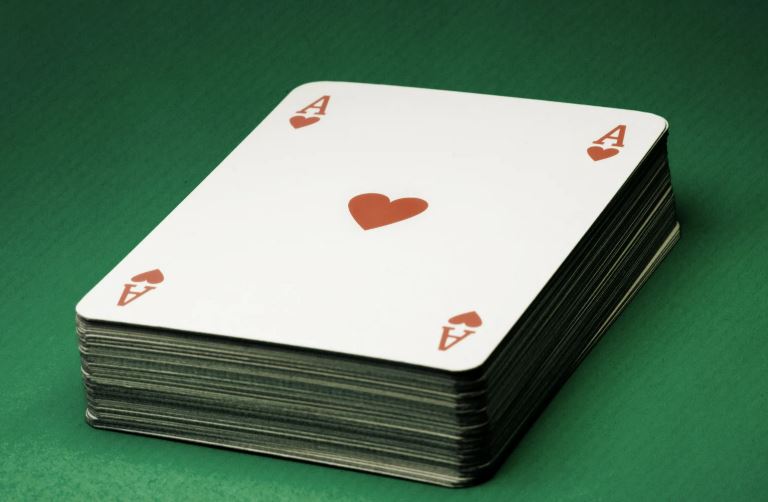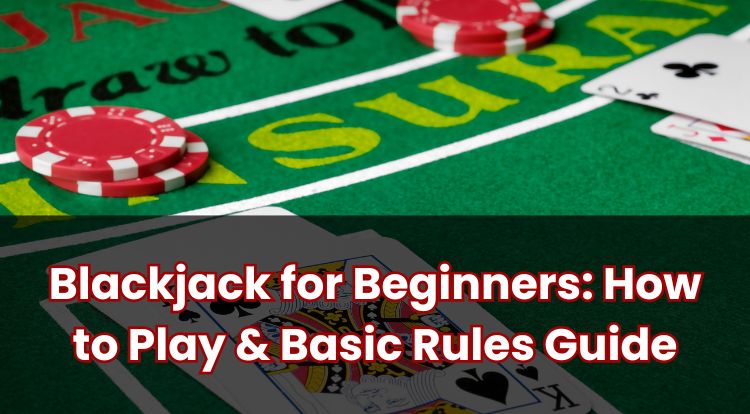How Many Card Decks for Blackjack? Casino Rules Explained
If you are new to blackjack, you may have heard that the number of card decks may affect how the game plays. This might sound technical, but it is simply part of how each version is set up.
This guide explains how deck counts work in both casino and online versions of blackjack, and how the number of decks could influence the rules and the overall maths of the game. Read on to learn more.
What Does It Mean When Blackjack Uses Multiple Decks?

When multiple decks are used in blackjack, the dealer works with several standard 52-card packs shuffled together into one shoe. Instead of drawing from a single deck, the game may use four, six, or eight decks.
The basic rules of blackjack remain the same regardless of how many decks are used. What changes is how easy it is to track which cards have been dealt. With more cards in play, predicting outcomes based on previous hands becomes less practical.
In physical casinos, multiple decks also reduce the frequency of shuffling and help keep the game moving at a steady pace. Online blackjack games display the number of decks in the information panel, so you can see the set-up before you start.
If you decide to try your hand at blackjack, remember to do so responsibly and within your means; never wager more than you can afford to lose.
How Many Decks of Cards Are Used in Blackjack?
The number of decks can differ from one table to another. Traditional single-deck games use one 52-card pack and are sometimes offered at higher-stakes or specialist tables.
Most casino tables and online blackjack games use more than one deck. Six-deck and eight-deck shoes are the most common, while some games use two or four decks. For example, an eight-deck game has 416 cards in total.
Online versions often display this information within the rules or paytable. Checking this could potentially help you understand how that particular game is structured.
Why Do Casinos Use Different Numbers of Decks?
Casinos select the number of decks for practical and gameplay reasons. Using several decks means the dealer reshuffles less frequently, which helps the game run efficiently. More decks also make it harder to track which cards have been played.
Some players prefer single-deck games because each hand can feel more direct. Others enjoy multi-deck tables or live dealer games that use six or eight decks. Offering a range of deck counts allows players to find a version that suits their preference.
Single Deck vs Multi Deck Blackjack Rules
Single-deck blackjack uses one standard pack. Because every card dealt affects what remains, probabilities shift more noticeably from hand to hand. To balance this, some single-deck games use adjusted rules, such as paying 6 to 5 for a blackjack instead of 3 to 2, or limiting doubling options.
Multi-deck blackjack combines several packs into one shoe, often six or eight. With more cards in use, shuffles happen less often, and the chance of a natural blackjack is slightly lower compared with a single-deck format. Rule variations may include differences in doubling, splitting, or whether the dealer stands or draws on a soft 17.
Before you join a table, reviewing the rules and payout details might help you understand how that version operates.
Play Slots & Online Casino Games
How Does the Number of Decks Affect the House Edge?
The house edge is the casino’s long-term mathematical advantage. Deck count influences this, though other rule changes have a greater effect. Fewer decks generally reduce the house edge slightly, all else being equal.
As a guide, a single-deck game with traditional rules and a 3 to 2 blackjack payout can have a theoretical house edge close to 0.15 %. A six-deck game under the same conditions can get as low as 0.5 % when optimal blackjack basic strategy is used. These figures assume optimal play and may vary between tables and providers.
Other rules such as the blackjack payout rate, when doubling is allowed, or whether the dealer hits on a soft 17 can have a stronger impact on the house edge than deck count alone.
Does the Number of Decks Change Player Decisions?
Deck count can influence playing decisions in minor ways. With fewer decks, each card dealt affects what remains to a greater degree. In multi-deck games, the effect of any single card is reduced because there are more cards in total.
Basic strategy charts are often tailored to the number of decks and specific table rules, such as whether the dealer stands or hits on a soft 17. Two games that appear similar may use slightly different strategies in certain hands.
Are Online Blackjack Games Different from Casino Tables?
Online and in-person blackjack share the same basic principles, but the card management process differs. In physical casinos, dealers draw from a shoe containing several decks. In most digital blackjack games, a Random Number Generator (RNG) deals cards. RNGs are tested by independent agencies to ensure fair and random outcomes.
Some online blackjack games reshuffle automatically after each hand, which removes any possibility of tracking previous cards. Live dealer games, streamed from studios, use real cards and real shoes similar to those found in land-based casinos.
Game information panels usually show the number of decks and the main rules. Reviewing these details could help you find the table format that matches your preferences. Always keep responsible gambling practises in mind.
**The information provided in this blog is intended for educational purposes and should not be construed as betting advice or a guarantee of success. Always gamble responsibly.
*All values (Bet Levels, Maximum Wins etc.) mentioned in relation to these games are subject to change at any time. Game features mentioned may not be available in some jurisdictions.
































































